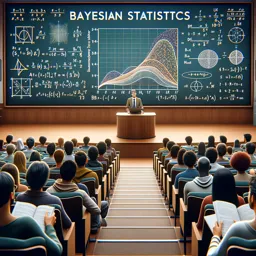Understanding Applied Statistics in Daily Life
Applied statistics is the branch of statistics concerned with solving real-world problems by collecting, analyzing, and interpreting data. It intertwines theoretical concepts with practical methods, enabling individuals and organizations to make informed decisions. Whether forecasting weather, improving manufacturing processes, or understanding health trends, applied statistics provides the tools necessary to navigate uncertainty and draw meaningful conclusions from data.
Core Areas Where Applied Statistics Makes a Difference
- Healthcare: Applied statistics is vital in clinical trials, epidemiology, and policy making. For example, it helps researchers determine whether new treatments are effective and ensures public health initiatives are based on solid evidence.
- Business: Market research, quality control, and risk assessment all rely on applied statistics. Businesses use these methods to predict consumer preferences, optimize pricing strategies, and monitor production lines for defects.
- Education: Data on student performance and educational interventions are analyzed with statistical methods to improve teaching strategies and curriculum designs.
- Government and Policy: Governments apply statistics for census data analysis, economic planning, and policy evaluation, helping to allocate resources efficiently and address population needs.
- Environmental Studies: Applied statistics is essential for monitoring climate change, managing natural resources, and ensuring sustainable development.
Key Tools and Techniques
Applied statistics employs a range of techniques, tailored to the specific problem and data at hand. These include:
- Descriptive Statistics: Summarizing and visualizing data to uncover patterns and trends.
- Inferential Statistics: Drawing conclusions about larger populations based on sample data, such as confidence intervals and hypothesis tests.
- Regression Analysis: Understanding and predicting relationships between variables.
- Sampling Methods: Designing ways to collect representative data while managing cost and effort.
- Time-Series Analysis: Analyzing data collected over time, crucial for forecasting and tracking changes.
Why Learning Applied Statistics Matters
In today’s data-rich world, understanding applied statistics is more important than ever. Individuals with these skills are equipped to critically evaluate information, identify trends, and support decisions with evidence. Whether you are a student, professional, or simply a curious thinker, learning applied statistics opens up a world of opportunities to participate in data-driven discussions and shape outcomes in your field of interest.
Getting Started with Applied Statistics
If you are new to applied statistics, begin with basic concepts like mean, median, and mode, then gradually advance to data visualization and inferential techniques. Hands-on practice, such as analyzing datasets relevant to your interests, will help reinforce your understanding and showcase the value of statistical thinking in solving everyday problems.

























